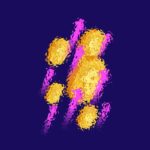- Bitcoin saw sustained buying pressure among long-term holders and reduced selling from short-term holders.
- The sustained negative exchange flow was another sign of accumulation.
Bitcoin [BTC] investors have not lost belief in the leading crypto’s continued bullishness. Despite trading above the $100k mark, public excitement was low, evidenced by low interest on Google Trends for BTC.
Chatter on X (formerly Twitter) suggested a looming double top near $108K, mirroring 2021’s cycle top. But the on-chain data told a different story.

Source: Axel Adler Jr on X
BTC Exchange Flow remained negative, for example.
Sustained Bitcoin withdrawals from exchanges since March meant that the netflow was negative.
In fact, since March, net outflows persisted, with over 3.6K BTC leaving exchanges daily—clear signs of investor confidence.
There was good reason to remain bullish
The steady negative Exchange Netflow was a bullish signal, but not the only one.
Short-Term Holders also began dialing back their profit-taking.
According to the Short-Term Holder Profit to Exchanges metric, profit flows sharply declined over the last two weeks.
When BTC first approached the $11k mark, exchange profit flow reached 49.5k BTC. As the price hovered around the $108k mark toward the end of May, the spikes on the chart reduced from 32k BTC to 3.4k BTC at the start of June.
This was a sign that STH sellers were depleted, even though Bitcoin was trading around the $105k mark.
Meanwhile, long-term holders were doing the opposite.
Starting in April, the 30-day Net Position Change flipped positive, with a net gain of 535K BTC.
This meant that whales and large investors stopped selling BTC, as they did toward the end of 2024, and began accumulating instead.
Increased holdings from long-term players were a pointer that they expected bullishness in the coming weeks.
Of course, that wasn’t without precedent.
In October 2023 and September-October 2024, we saw net position growth for LTHs. It was followed by swift rallies, and another one could be brewing.









